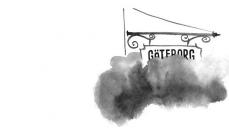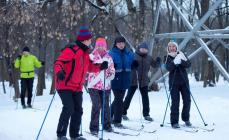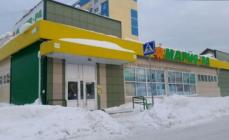- Tours for May Worldwide
- Hot tours Worldwide
- Passports of all participants of the trip with valid Schengen visas pasted into them (a child under 14 years old can be entered in the passport of one of the parents; if independent trip- must have his passport and a notarized consent to travel);
- Birth certificates of children;
- Medical insurance for each participant of the trip with a coverage amount of at least 30,000 EUR;
- Driving license of international standard;
- Vehicle registration certificate;
- Green card valid in the territory of Latvia. Civil liability insurance can be purchased in Russia no earlier than a month before the trip, the minimum validity period of the document is 15 days
Citizens of Russia, when visiting Latvia in their car, need to collect a standard package of documents: an application form, a certificate from the place of work, a bank statement on the availability of Money, hotel reservation, medical insurance. As well as a certificate of registration vehicle, driver's license, green card for a car.
Having collected the above package of documents, you can apply for a Schengen visa in Latvia.
Among the documents for the car are copies of rights, registration certificates and green cards. When traveling by corporate car, a general power of attorney with the right to travel abroad is required. The power of attorney must be certified by a notary.
Also, border guards can request a diagnostic card of a car with Russian registration older than 3 years, since according to the laws of Latvia (and Lithuania), an entering car must be in good condition according to the country of registration.
Edition of the "Subtleties of Tourism"
To enter the territory of Latvia with your own car, the following documents are required:
A driver crossing the Latvian border must have a driver's license that meets international standards. This is a plastic card, where the full name is indicated on English language. A corporate car additionally requires a general power of attorney certified by a notary to leave the car abroad.
You can drive into Latvia by car with tinted front side windows (carrying capacity of at least 80%). Rear and side rear windows may have less throughput. In European countries, you cannot cross the border if there are cracks on the windows of the car, the body is damaged. If the auto glass tinting is factory, then there are no problems.
When traveling to Latvia by car, keep in mind that there are restrictions on the import of the following things in the republic: no more than 40 cigarettes, 1 liter of strong alcohol and 156 liters of beer, 10 liters of automotive fuel in any appropriate container can be imported into Latvia. In addition, it is forbidden to import meat and meat products, including stew, into the republic.
Residents of Latvia often jokingly call her herself western part Russia and eastern part Europe. Quite European service is combined here with prices comparable to Russian ones. The Russian language is in use almost everywhere. Even those who do not know him well try to understand the tourist. Clean (but usually rather cold) sea and soft sand, interesting architecture of different styles and many museums, and finally, relative proximity to the European part of Russia - all this is Latvia.
If we go to Latvia by car, then at least five to seven days. It definitely won't be boring.
What to take?
Standard, in addition to the international passport: driving license, certificate of registration, car insurance - "green card", power of attorney, if you are driving a legal entity's car. Recently, at the Latvian border, they sometimes ask for a diagnostic card, which we are given when passing a technical inspection. The legitimacy of this requirement is doubtful even among some Latvians, but it is better not to argue with the border guards of any country, but to put the card in the glove compartment.
You can take two (!) packs of cigarettes with you, one liter of strong alcohol or two liters of other alcohol per adult. In addition to a full tank, you can grab a 10-liter (no more!) canister of fuel.
How to ride and how to stand?
From Moscow, the direct and easiest way is along the M-9 "Baltic" highway until it stops at border crossing Burachki - Terehova. It is about 600 km to the border, 920 km to Riga. The road is good now.How long will it take to cross the border? Non-programmable! At least forty minutes, normally - an hour and a half. My record is seven hours, and my friends generally told horror stories. At the border crossing, in principle, you can call (81140) 31–384, 22–311) to find out what the queue is. But, of course, they do not always pick up the phone.
There is another route, where there are usually fewer queues at the border crossing and, by the way, servicemen are not interested in a diagnostic card. Approximately 540 km from Moscow in Pustoshka, we turn right onto Pskov. We reach the town of Ostrov (about 130 km) and turn left onto Palkino (a narrow, but empty and decent road), then straight ahead - to Izborsk and at the T-shaped intersection to the left onto Shumilkino - the border with Estonia. The lines are usually shorter here. The distance to Riga is increased by 60 km, but the travel time is sometimes even reduced. By the way, at the Estonian border for 1.5 euros you can book a queue, but only on the way back. You are given an hour during which you need to drive to the parking lot near the border. As soon as you see your car number on electronic scoreboard, go to the barrier. Everything is acting clearly, you will leave Estonia without delay. But this absolutely does not mean that you will not stand for a couple of hours in front of your native border. In general, the border crossing procedure is the only unpleasant episode in the whole trip. You have to be philosophical about it.
Driving around Latvia is simple and easy - traffic is low, drivers are usually neat and polite. But the rules must be respected. The unwritten speed limit is 10 km/h. The whole country was hung with cameras, there are also police ambushes. Just like that, no one will stop to “check documents”, but violations, as a rule, will not be forgiven - they will politely write out a rather big fine. By the way, everyone should be fastened in the car, and not just those who sit in front. And one more thing: to pass with oncoming cars, which, like you, turn left at the intersection, you need to left, not right sides.
Gasoline in Latvia costs about 1.2 euros, diesel fuel - 1.05 euros. But the country is small, the roads are free, and the traffic regime is very gentle, so you will drive very economically.
When choosing a hotel, consider where you will park your car. The closer to the center of Riga, the more difficult it is to find free parking, and parking is more expensive (prices range from 1.5 to 4.5 euros per hour). On some streets from 20:00 to 08:00 parking is free. But leaving the car for the night, estimate when you will pick it up? If it's later than 8:15, it's easier to pay for parking in advance. It is not at all difficult to do this using a parking meter: you dialed the departure time, paid (in cash or by card), put the coupon on the dashboard in a prominent place. Otherwise, you will see a blocker on the wheel. Some hotels have their own parking lots, sometimes even free, but this must be specified in advance.
Where to live and eat
A double room in a decent three-star hotel within a 15-20 minute walk to the center will cost 40-50 euros per day with breakfast. The closer to the center - the, of course, more expensive. A simple room outside the city can be rented for 7-10 euros.
A full lunch in a self-service restaurant (the most famous chain in Riga with a huge selection of everything and everything - Lido) will cost 6-7 euros, with beer - about 10 euros (depending, of course, on appetite).
Dinner in a more pretentious restaurant, of course, is more expensive: from 20–30 euros per person. Again, the standard principle applies: the farther from the center, the cheaper. By the way, products in supermarkets are no more expensive than in Moscow.
What to watch?
Standard set
Everyone who comes to Latvia, of course, goes to Old Riga (Vecriga). And they do it right! Narrow, crooked medieval streets, old houses, many cozy cafes and restaurants, souvenir shops are worth it. Old Riga is the closest similar museum to us under open sky. You can walk here for hours. By the way, it is here that movie lovers will find the house from the window of which Professor Pleischner jumped out, and the streets along which Sherlock Holmes and Dr. Watson walked.
Latvia is a country of palaces and castles. The most famous, of course, is the Rundale Palace in the town of Pilsrundale (Pilsrundāle) outside the town of Bauska (Bauska) - about 80 km from the center of Riga in the direction of Kaunas. The palace was built for the favorite of Empress Anna Ioannovna Biron by Rastrelli himself. Now, after a large-scale restoration, inside is a museum, next to it is a luxurious regular park in the style of the 18th century.
In addition to this castle, the standard set usually includes a visit to Sigulda. In a small town 50 km from Riga, there is also a castle, founded already in the 13th century, and a museum. Surrounded by stunning picturesque hills..
And, of course, almost everyone who has ever been to Latvia comes to Jurmala to check in. Here are beautiful sandy beaches. But even if the weather does not allow to indulge beach holiday(and this happens often in Latvia), you just have to walk along the coast and, of course, along the Jomas pedestrian street, famous since the times of the USSR, with cafes and shops, look at the pretty houses. And at the entrance to Jurmala from Riga there is Entertainment Center with a large water park.
Additional options
In contrast to Old Riga, Jugend-style architecture, which Rigans are proud of, usually receives less attention. But in vain! Richly decorated tenement houses, in particular the works of Mikhail Eisenstein, the father of the famous director, are worth spending a couple of hours on.
Riga is full interesting museums(admission 4–10 euros): military, ethnographic, artistic and, of course, . He is known more than others. The museum was the first of its kind in the USSR, and after a major restoration, it is not only a very interesting collection of cars and motorcycles, but also a lot of interactive things for the delight of children who can press, touch, twist something. All explanatory inscriptions in Latvian, English and Russian. There is also a wonderful zoo in Riga.
Not everyone, even those who went to the Rundale Palace, know that on the way, in the town of Bauska, there is a small branch of the Riga Motor Museum, which is also worth a visit. In addition to Rundāle, there are many lesser-known castles and manors in Latvia. For example, in Jelgava, in Jaunmoku near the city of Tukums, not far from the popular Sigulda, where the less famous Birini manor is.
What to buy?
The cost of the simplest, but real amber products starts from 20-30 euros, and you should buy them only in specialized shops. Latvia is famous for its excellent woolen products. But in addition to standard souvenirs, in the first place, in my opinion, you need to bring fish, beer and bread. It is better to buy fish, of course, at the famous central market in Riga, where one of the four huge pavilions is reserved for it. In the villages on the coast there are also small bazaars, but experts still advise Riga. Everything is here and the quality is guaranteed! Of course, it is best to bring smoked meats. Prices range from quite democratic 3-4 euros per kilogram of flounder to 40 euros for smoked eel.
Latvia has a great variety of good beers for every taste - dark (tumsais - tumshas), light (gaisais - gaisis), unfiltered. Prices in supermarkets range from 0.8 to 1.6 euros per bottle. Just remember that you can bring no more than three liters of any alcohol per adult traveler into Russia. You can buy, of course, another bottle of the famous Riga balm, but it's just not difficult to find it in Russia. Unlike local beer.
There are almost as many varieties of rye bread in Latvia as there are varieties of beer. The choice is huge in any store. But the favorite tourist place is the bakery and shop Laci (Laci - bears) in the town of Pinki (Pinki), about 16 km from the center of Riga on the road to Liepaja. There not only huge selection fresh bread of different varieties, but there are also excursions to the bakery ...
As a rule, those who came to Latvia for the first time plan to repeat the trip. It's worth it.
Traveling in your own car has its advantages:
No need to depend on schedules public transport, look for favorable rates, connect routes (train + buses, plane + bus, etc.)
It is especially advantageous to travel by car with a family or a large company. Buying train or bus tickets for everyone will be much more expensive.
You can drive around in your car and see more interesting things. In addition, you can visit places where the foot of an ordinary, average tourist "does not set foot".
Before the trip, you can plan the route in advance, think about stops for gas stations, lunch and rest, etc.
Cons of traveling by car to Latvia:
Machine depreciation
- driver cushioning
Of the additional costs - Green card for the car
From Russia to Latvia by car - route options
Volokolamsk - Rzhev - Velikiye Luki - Burachki (border of Russia) and Terekhovo (border of Latvia)
From Moscow to Riga, the shortest road - the M9 highway leads through Volokolamsk, Rzhev, Velikiye Luki to Burachka / Terekhovo. The track after major repairs since 2016 is almost in perfect condition. However, quickly reaching the border does not mean that it is also fast to pass it. It is the Burachki/Terekhovo border crossing that is usually the busiest (more on that below).
Minsk highway - Smolensk - Velizh - Nevel - Pustoshka - Burachki (border of Russia) and Terekhovo (border of Latvia)
As an alternative to the first route, we can offer to leave Moscow along the M1 highway (Minsk highway). Just before reaching Smolensk, you will need to turn onto the road in the direction of Velizh - Nevel. From there, you can already take the M9 in the Pustoshka area and head towards the border to the Burachki/Terekhovo crossing.
Minsk highway - Smolensk - Rudnya - Vitebsk - through Belarus - Grigorovshchina (border of Belarus) - Paternieki (border of Latvia)
Third itinerary. Also leave Moscow along the M1, and after the Smolensk bypass, turn onto the road in the direction of Rudnya - Vitebsk. Then go through Belarus to the border with Latvia (crossings Grigorovschina - Paternieki).
No additional documents are needed (Green card / Green card will also be valid on the territory of Belarus).
Vehicle checkpoints on the border between Russia and Latvia
Checkpoint Burachki - Terehova
It is located on the direct route Moscow - Riga. The passage of this checkpoint always takes longer among all points due to the high congestion of the M9 Baltic highway.
Working hours- daily, around the clock, technological breaks: 08:45 - 09:00, 20:45 - 21:00
Works around the clock
Routes pass:
Russia - M9
Latvia - E22 (A12)
St. Petersburg - 460 km.
Moscow - 590 km.
Pskov - 200 km.
Rezekne - 60 km.
Riga - 300 km.
Daugavpils - 150 km.
Up-to-date information about the situation on the highway and the Burachki Checkpoint -on the website of the Administration of Federal Highways of the North-West of Russia
Checkpoint Brunishevo - Pededze
Convenient for those who plan to travel to Latvia from St. Petersburg.
Routes pass:
Russia - A212
Latvia - R42
Approximate distance to/from the checkpoint:
St. Petersburg - 340 km.
Moscow - 720 km.
Pskov - 65 km.
Aluksne - 35 km.
Riga - 235 km.
Daugavpils - 230 km.
Tallinn - 340 km.
No
Checkpoint Ludonka - Vientuli
Suitable for those who drive up to the Latvian border from Nosovo. It is located in the village of Novaya Ludonka, on the fifth kilometer of the Nosovo-Ludonka highway. The throughput of the point is 100 trucks, 380 cars and 20 buses per day.
Working hours: around the clock, technological breaks: 8:40 - 9:00, 13:00 - 13:30, 01:30 - 02:00, 20:40 - 21:00
Routes pass:
Russia - A116
Latvia - R35
Approximate distance to/from the checkpoint:
St. Petersburg - 390 km.
Pskov - 115 km.
Gulbene - 70 km.
Riga - 250 km.
Daugavpils - 200 km.
Duty Free Shops- No
Checkpoint Ubylinka - Grebneva (Grebnova)
The nearest checkpoint from Pskov. The M9 highway passes here.
Working hours: around the clock, technological breaks: 8:00 - 9:00, 20:00 - 21:00, lunch: 13:00 - 14:00
Routes pass:
Russia - A116
Latvia - E262 (A13)
Approximate distance to/from the checkpoint:
St. Petersburg - 400 km.
Moscow - 650 km.
Pskov - 120 km.
Rezekne - 50 km.
Riga - 300 km.
Daugavpils - 150 km.
Duty Free Shop- works around the clock
Up-to-date information about the queues at the customs checkpoints Terekhovo, Grebnevo, Paternieki on the website of the Latvian Tax Service:
In terms of the development of electric vehicles Latvia a fairly advanced country compared to others European countries. True, it is somewhat behind Estonia, but ahead of Lithuania. True, in neighboring Lithuania there are already electric taxis, but not yet in Latvia.
By the way, in Latvia, electric cars have the right to drive along the public transport lane, but there are still no promised preferential parking spaces (neither in municipal car parks, nor even in commercial ones).
The only thing is that you can stand for free while charging at charging points (in Riga - only at 3 gas stations at the addresses - Dārzciema iela, 60E, Kārļa Ulmaņa gatve, 86, Ķīpsalas iela, 8). In regional cities - places at special gas stations - everywhere are free.
At 6 EuroPark car parks, you can charge an electric car for free, but the parking itself is still paid (without benefits).
In the photo - A dedicated parking lot for refueling electric vehicles in Riga - at the Mols shopping center
In Riga by car - where to leave the car, how much does parking cost?
Where can I leave a car in the center of Riga, in the Old Town for free? How much does parking cost in paid parking lots and Europark parking lots, how to pay for parking?
Before the trip, read the reviews and travel reports of those who have already traveled to Latvia in their car. There is always really useful practical information here.
If you are going to go to Latvia through Belarus - stock up on fuel in advance! There are gas stations in Belarus only in major cities, and between them - there is every chance to stand empty.
IN in public places in Latvia it is forbidden to smoke, as well as to carry a bottle of alcohol down the street that is not packed in a special bag. (the municipal police works very quickly in this regard - the streets of Riga, for example, are equipped with a large number of surveillance cameras)
Getting around Riga by car is not difficult, but keep in mind that many city streets are one-way and there is nowhere to park
Parking in Riga is expensive. If you want by car, you can enter the territory of the Old Town for free, but here you have every chance of getting lost along the tangled and small streets. The cost of parking in this part of Riga is the highest. For the first hour of parking, you will have to pay 8 euros, and for all subsequent hours - already 11.5 euros.
In Riga, Latvia, it is customary to leave a small tip to taxi drivers, in hotels, as well as in cafes and restaurants (if they are not included in the bill).
By car you can travel like Rundale, Cēsis, Sigulda, Tervete, lakes in Latgale, as well as many other picturesque places. The bus service to these places is quite inconvenient, so it is better to go there by your own car.
Definitely a must visit! Ride a bike along the seashore, breathe in the pine air...
We mostly travel to Riga by car.
In order to have time to take a walk at least in the evening on the day of departure, we depart early in the morning.
At five in the morning we already start from Moscow
We fill a full tank of gasoline and go!
A few years ago, the road in the Tver region was repaired and it was difficult to drive through these pits and ruts.
Now, finally, this section of the road has been repaired. And you can go with a breeze.
passing Tver region, I I have always wondered why there are so many villages with the names either Fires, or Iskrino, or Burnt Gorodishche, a lot of names are associated with fires.
After all, you know what you call a ship, so it will sail ..
And so, this time all these "fire" villages passed, and everywhere there was a fire, burnt grass ..
(Photo from car and iPhone)


I don’t know whether they set it on fire on purpose .. But no one extinguished the fires. And the fire area was quite large. It’s a pity for the trees, because their roots also die ..
We rushed to the Latvian border in 5 hours.
Just before the border, they again filled up a full tank, since gasoline is much more expensive in Latvia.
We drove a line of trucks in front of the border, we were lucky - there were no queues to the border guards from cars at all.

We passed the Russians and Latvians in an hour. Very quickly, despite the fact that the Russians had a broken computer and had to wait 25 minutes until the system was debugged.
This time Latvians carefully searched the car. Found food. Two cheeses.
There are two ways from the border to Riga. On one way you can get there in 4 hours. And on the second, which cuts the way and fewer traffic lights, we went.
The speed on the highway in Latvia is 100 km. It is not worth exceeding. Traffic cops often drive in their cars and fix the speed..
On the way we decided to stop and climb the wooden tower. Look at the swamp. Very beautiful.

Closer house, the roof of which I removed from above 


A few more hours, and we arrived in Riga at 15:00. The road was easy..
Whether you are an experienced traveler or your first time in Europe, you are quite capable of organizing your trip to Riga on your own. Without dwelling on the merits of the city, which we have written about many times, here are five stages of planning a trip on your own.
Planning time for a trip to Riga
Riga is a very popular city among tourists, with more than a million visitors a year, and the mayor's office plans to bring this figure up to 1.5 million tourists a year. And this is with a population of 700 thousand inhabitants, that is, there are 1.5 tourists per inhabitant of Riga.
But still, we hasten to reassure you, even during the peak periods, tourists spread around Riga and Jurmala in such a way that the city may seem deserted to Muscovites.
The best period to visit Riga is from May to August, and also during Christmas and New Year holidays. If you are planning a trip at this time, take care of booking a hotel and transport tickets 2-3 months in advance.
In the event that you prefer a calm atmosphere, then we advise you to come in the second half of April, or from September to mid-October.
The tourist flow subsides, but the weather often gives warm sunny days. Plus, hotels at this time reduce accommodation prices, so you can save up to 30-50% of the summer room rate. Below we will share the secret of how to book a hotel in Riga in the most profitable way.
Registration of an entry visa to Latvia
Latvia is part of the Schengen zone, which means that if you have a Schengen visa in your passport, then you can skip this item - the road to Riga is open to you.
If you don't have a visa, you will need to apply for one.
We have described this process in sufficient detail on our website in the section "", here you can read about required documents, the procedure for completing the questionnaire and .
Booking a hotel in Riga
Yes, we start with the hotel.
There are several reasons for this - you can get to Riga various types transport, the number of only flights per day reaches five (Aeroflot, Transaero, Utair and Airbaltic). But there is still a train, a bus, a private car, finally. There are also a lot of hotels in Riga (about 200), however, in the high season, occupancy reaches 100%. Finally, you can refuse to book a hotel, but plane tickets are problematic.
With booking, everything is very simple, without further ado, just go to one of the on-line hotel booking services.
The risk at this stage is minimal, because no one forbids later.
We plan how we will get to Riga
We have already reviewed the most economical ways to travel, which you can read by clicking on this link ().
In our understanding, the best solution is an airplane. When completely reasonable prices You do not waste the night on the train (with a mandatory rise at three in the morning for customs control), do not waste your nerves on crossing the border by car and do not shake the bus for fifteen hours.
Getting ready and dreaming about the trip
The chores are left behind, it's time to plan your trip. To begin with, we are looking for guidebooks around Riga on the Internet.
It is not possible, there are sites, as well as to download to the phone? And you don’t want to buy books - carry them with you around the city later?
Well, it’s quite a reasonable desire, which we meet - on our website you can download (moreover, freely) four parts of the guide to Riga -
No copyright infringement - the guide was prepared by the site and we give you all the rights to use and distribute it! (just don't change anything in the text) The fourth part is coming out soon - "Riga - the pearl of Art Nouveau". We can promise that it will not be the last.
Finally, we have available, advice on where and how to pay for parking .. oh, it’s not good to praise yourself, so we’ll stop there and want to wish you a unforgettable vacation in the very beautiful city Baltics!






